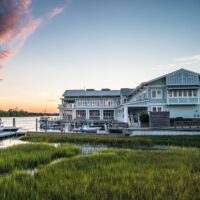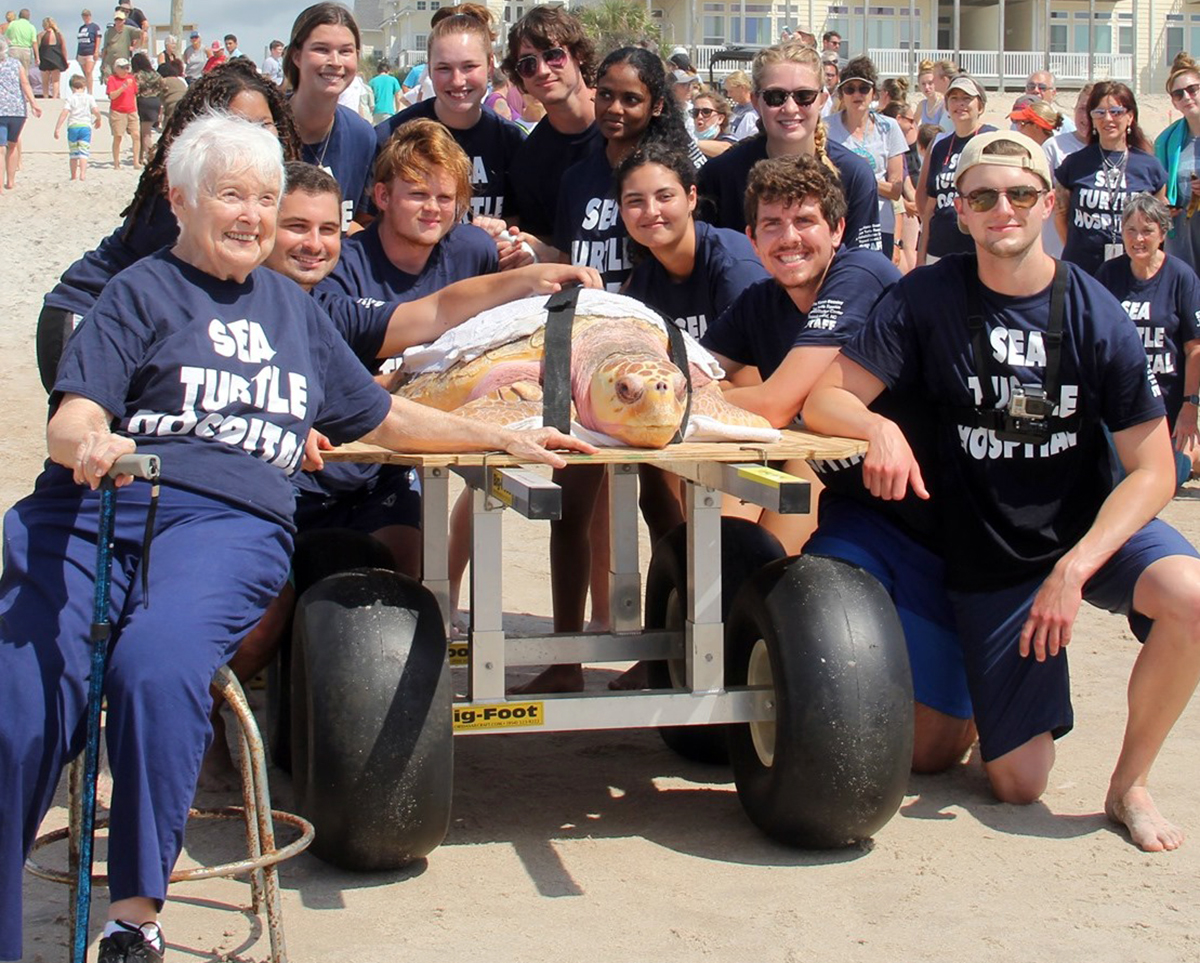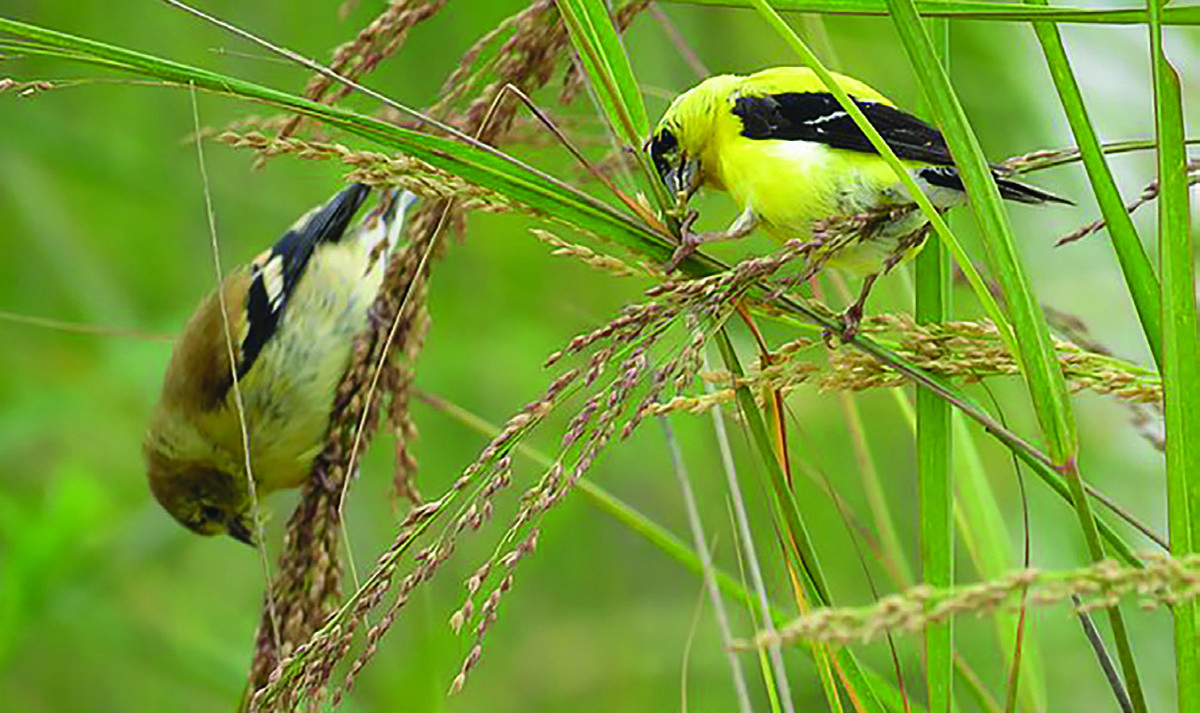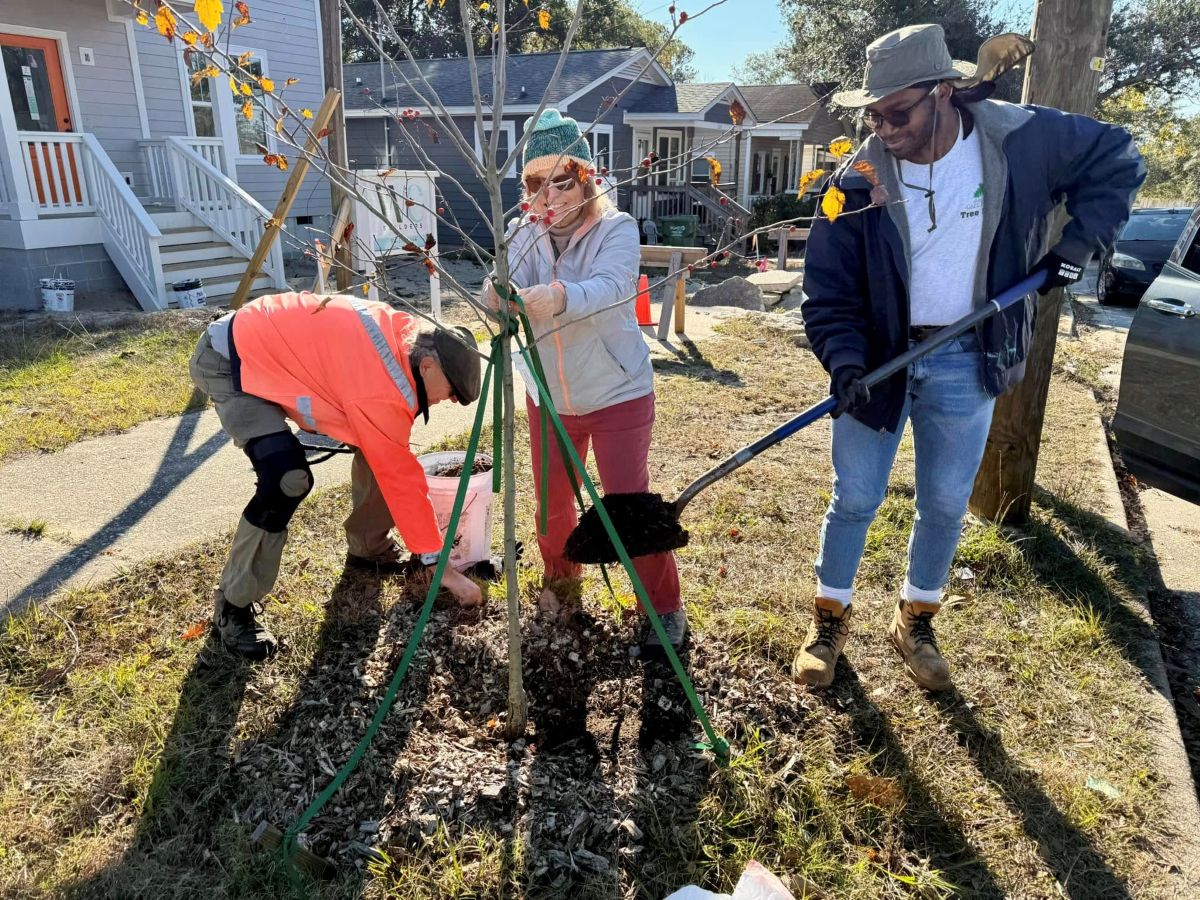
As the weather and water warm, beachgoers will flock to the North Carolina coast just as many of the native shorebirds and seagoing avian residents begin to nest.
Piping plovers skittering up and down the sand with the surf, gulls loitering for picnic castoffs and tossed fish bait and pelicans soaring overhead or skimming the swells are all well-known and welcome sights for tourists to the North Carolina coast.
Supporter Spotlight
The annual nesting sanctuary closure window from March 1 to Sept. 15 helps both early and late-season nesters like brown pelicans and black skimmers. Least terns have already begun their courting and nesting rituals and American oystercatchers have started hatching chicks.
While almost any sandcastle builder, surfer or fisherman can expect to share the shore with these birds, almost all of them are in steep decline from habitat loss, rising sea levels, pollution and other threats, a new study led by the Audubon Society shows.
The 2025 State of the Birds Report shows sharp declines in shorebirds and other species along the Atlantic Coast, including least terns, American oystercatchers and piping plovers. In North Carolina, black skimmers have also seen a drop in documented nests, leading to their designation as a state-threatened species.
“The issues facing shorebirds are complex,” Audubon North Carolina spokesperson Brittany Salmons told Coastal Review. “The combined effects of sea level rise due to climate change and how we respond to that by choosing natural solutions versus shoreline hardening play a central role in the long-term hope for these species. Development brings more people and more alterations — like dredging, beach nourishment, terminal groins — to the habitats birds need. For shorebirds in particular this can be catastrophic. Having inlets with natural oscillation and broad flats are critical, along with water quality and prey abundance.”
If shorebirds can rise above all of that, many species also have to endure lengthy, challenging migrations from their nests on the Arctic tundra to wintering grounds in South America and places in between. The quality of each of the habitats they will encounter on their multi-thousand-mile annual odysseys is critical to their survival and ability to return to their nesting grounds to breed once more, Salmons said.
Supporter Spotlight
Nationally, about a third of all bird species – Audubon kept count of 229 individual species from coast to coast – are considered of high or moderate concern because of declining populations.
Of those, 42 species are listed as red-alert tipping point species, or “birds with perilously low populations and steep declining trends.” Another 37 species are considered orange-alert, populations that show long-term population losses and accelerated declines within the past decade. Thirty-three species qualify for yellow-alert status, showing long-term population losses that have stabilized in recent years yet still require conservation to sustain that tenuous recovery, Audubon said.
All of those species, regardless of their color coding, have one thing in common: They have each lost more than half of their measurable populations in the past 50 years.
“Some of these species lack sufficient monitoring to thoroughly investigate losses,” states the report. “Tipping point species require focused scientific research to pinpoint drivers of declines, paired with fast action on conservation measures to bring these birds back.”
As a group, shorebirds fared worst among the bird populations outlined in the report. Since 1980, shorebirds have suffered a 33% decline in overall population, which the report characterizes as “widespread declines with accelerating losses.”
Of 28 species of shorebirds measured, 19 showed “definitive negative population trends,” with 18 of those showing accelerated losses in recent years. Shorebirds are most heavily represented among the species listed as at a tipping point.
“Surveys show steep shorebird declines at migratory staging sites along the Atlantic Coast from North Carolina to Nova Scotia, as well as the Gulf Coast,” the report says. “Conservation actions to restore these critical coastal habitats will protect shorebirds, people and property from storms, flooding and sea level rise.”
Targeted efforts needed
Targeted conservation efforts are needed to protect shorebirds along the North Carolina coast and elsewhere along the Eastern Flyway, Audubon said. The report highlights efforts to protect the American oystercatcher, the black, white and brown shorebird notable for its thick, sturdy orange bill.
Fifteen years ago, the oystercatcher was in serious decline throughout its Atlantic Coast range. In 2009, Manomet Conservation Sciences, in partnership with the National Fish and Wildlife Foundation, launched the American Oystercatcher Recovery Initiative composed of state, federal and private groups across 16 states all along the Atlantic and Gulf coasts. The coordinated conservation effort has resulted in a 43% increase in oystercatcher populations, from about 10,000 individuals in 2009 to nearly 15,000 in 2023, according to the report.
Targeted management and monitoring along the coast, including protecting areas for oystercatcher use paid off, the report says. Remote islands and portions of public beaches were also roped off to keep the public from interfering with the birds’ natural behavior and reproduction.
“This coordinated, multi-state effort saved this iconic, orange-billed bird from irreversible loss,” Audubon Coastal Biologist Lindsay Addison said. “People visiting the coast this summer can do their part by respecting posted sanctuaries and keeping a safe distance from beach-nesting birds. We’ve already limited available habitat with development, the least we can do is share the shore.”
Seabirds – gulls and similar species that spend much of their time soaring over ocean waves – were also found to be in freefall. Audubon characterized seabird populations as suffering “cascading declines, but recovery efforts show great promise.”
Seabirds face numerous threats
Rising sea levels coupled with booming coastal development have wreaked havoc on natural seabird habitat and roosting sites, the report says. Seabird colonies on low-lying islands, like North Carolina’s barrier islands, are flooding more often. Marine heat waves are shocking their food sources.
Ravenous invasive species consume seabirds and their eggs in many coastal areas. They also become bycatch in many coastal fisheries and fall prey to plastic pollution and infectious disease, Audubon says.
“Protected nesting colonies and marine foraging areas can provide refuges for seabirds during extreme storm events,” the report says. “Policies that reduce fishing bycatch and plastics pollution can help mitigate direct human-caused stressors.
Most of the shorebird species highlighted in the report are long-distance migrants, which face a somewhat different set of challenges than temperate-nesting, shorter distance migrants like the American oystercatcher, Salmons said.
“To get between breeding and wintering grounds, these long-distance migrants must navigate a series of steppingstone sites where they stopover before continuing on,” Salmons wrote in an email. “Many of these are impacted by human presence on the coast, be it from beach renourishment or other coastal engineering projects that degrade habitat quality and prey availability.”
Waterfowl and waterbirds — ducks, rails, egrets, heron and the like — showed some of their long-term population gains level off but have fared better than their seaside cousins, according to the report.
In general, duck populations have grown 24% in the past half century and waterfowl were the only group of birds in the report that showed population gains. Of 20 species of duck measured, 14 were found to be increasing in population while one was stable and just five are declining.
Large-scale conservation policies and efforts from legislation like the North American Wetlands Conservation Act and the Duck Stamp program are partially responsible for the health of duck species in particular.
“But today, this legacy is in jeopardy,” the report said. “Loss of wetlands and grasslands is accelerating in key regions for waterfowl and wetland protections are being weakened. Environmental land-use changes are driving recent duck and marsh bird declines in many areas.”
Declining bird populations were laid bare in a 2019 study published in the journal Science that showed a net loss of 3 billion birds in North America over the past half-century. The 2025 State of the Birds report shows those losses are continuing.
But, Audubon stresses, conservation works. Coastal restoration, conservation ranching, forest renewal and seabird translocations “show how proactive, concerted efforts and strategic investments can recover bird populations,” the report says.
“The science is solid on how to bring birds back,” according to the report. “Private lands conservation programs, and voluntary conservation partnerships for working lands, hold some of the best opportunities for sparking immediate turnarounds for birds.”
Share their habitats
Policies aimed at reversing bird population decline can also benefit humans who share their habitats by creating healthier agricultural land, cleaner water and natural landscapes that better resist flooding, wildfire and drought, Audubon says.
Birds are also the natural foundation for a soaring outdoors industry. Around 100 million Americans are avid birdwatchers, not to mention hunters and anglers, all activities to which healthy bird populations are a keystone feature, Salmons said. Audubon puts the total economic impact of birding activity at $279 billion annually.
Regular folks can help support healthy bird populations by giving them room this summer, as they roost and lay their eggs along the North Carolina coast. Getting too close to a nest can scare parents away from eggs or hatchlings, Salmons said.
Human disturbance, in which recreational or other activities disrupt shorebirds’ survival behaviors, she said.
Such activities include people walking through resting or foraging flocks and allowing dogs or children to chase birds which wastes their energy and makes otherwise suitable habitat unavailable for their use. Repeated disturbance has a cumulative impact on birds at the coast.
“Just as running once to catch the mailman won’t cause a person to be too exhausted to cook dinner and clean the house but doing it all day can, being repeatedly disturbed over and over impacts the health of shorebirds,” Salmons said. “Compounding these challenges which relate to the heavy development and recreational use of coastal sites are issues related to climate change, such as impacts to Arctic nesting grounds, timing of resource availability, and other factors.”







